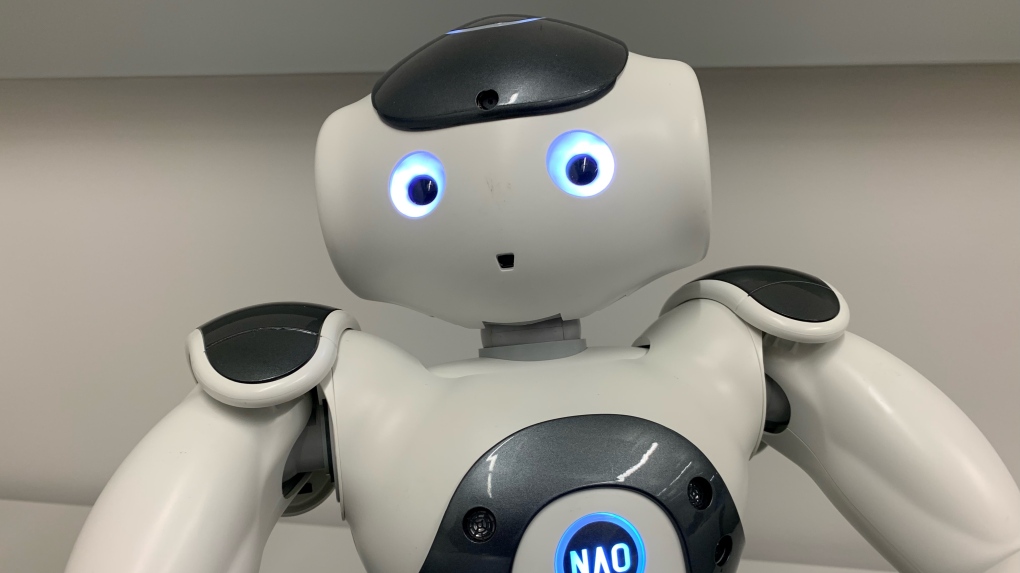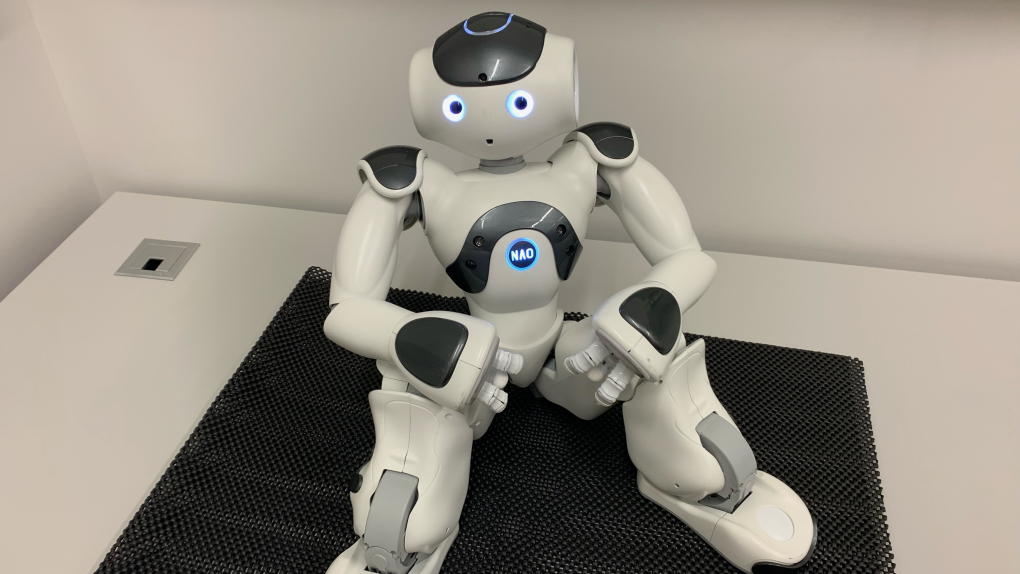What makes a good social robot? The answer might surprise you
Making a good first impression is important to many people – and it turns out it’s also something you need to think about when it comes to social robots, or robots designed for interpersonal interactions with humans.
New research out of the University of Waterloo’s Social and Intelligent Robotics Research Lab has found that people prefer robots that seem similar to themselves.
The study, done by professors Moojan Ghafurian and Kersten Dautenhahn, asked 95 people to rate pictures of 11 different robots on some key characteristics like how good, active and powerful they appeared.
Participants then had to rate themselves on the same traits and say how interested they would be in working with the various robots in a health care setting.
The results were interesting.
“The closer they rated the robot to themselves, the more interested they were to use it in a health care scenario,” says Ghafurian.
 Nao, a robot from the University of Waterloo Social and Intelligent Robotics Research Lab, whose image was used as part of the study. (Krista Simpson/CTV Kitchener)
Nao, a robot from the University of Waterloo Social and Intelligent Robotics Research Lab, whose image was used as part of the study. (Krista Simpson/CTV Kitchener)
The information could help fine-tune robots in the future.
“We want them to be successful, so we want them to be personalizable, which means to adjust their personality and interactions based on each individual,” Ghafurian explains.
Social robots could one day be used in numerous other settings too, including education. Masters student Andrea Chakma, who is also studying social robots, says the potential ranges from using robots to help children improve their spelling, to reminding older people to take their medications throughout the day.
 Nao, a robot from the University of Waterloo Social and Intelligent Robotics Research Lab, whose image was used as part of the study. (Krista Simpson/CTV Kitchener)
Nao, a robot from the University of Waterloo Social and Intelligent Robotics Research Lab, whose image was used as part of the study. (Krista Simpson/CTV Kitchener)
Ghafurian is particularly interested in how robots could help older adults, including people with dementia.
Chakma says good first impressions are especially important as people become familiar with the idea of social robots in real life, and not just how they’re portrayed in fiction.
“Oftentimes we see robots portrayed as sometimes scary, sometimes things that we don't understand, things that we don't recognize,” says Chakma. “So if a robot, at first glance, can make a really good impression for you and you can connect with that robot, then it makes you feel a lot more at ease and a lot more comfortable when you're actually interacting with it.”
CTVNews.ca Top Stories

NEW Is there a cost to convenience? Canada approves new cancer immunotherapy treatment
A new cancer treatment recently approved in Canada promises to cut treatment time down to just minutes, but experts have differing opinions on whether it's what's best for patients.
Air Canada walks back new seat selection policy change after backlash
Air Canada has paused a new seat selection fee for travellers booked on the lowest fares just days after implementing it.
Canada's new dental program offering hope of free care to millions but many dentists aren't signed up
A new Canadian dental care program is offering the hope of free care to millions, but while 1.7 million people have signed up for the plan, only about 5,000 dentists have done the same.
Province boots mayor and council in small northern Ont. town out of office
An ongoing municipal strike, court battles and revolt by half of council has prompted the province to oust the mayor and council in Black River-Matheson.
King Charles III returns to public duties with a trip to a cancer charity
King Charles III returned to public duties on Tuesday, visiting a cancer treatment charity and beginning his carefully managed comeback after the monarch's own cancer diagnosis sidelined him for three months.
NDP says Ottawa's new grocery task force isn't living up to government promises
The federal government says the task force it created to monitor and investigate grocery retailers' practices has not conducted any probes and doesn't have a mandate to take enforcement action.
A group of Toronto tenants have been on a rent strike for a year and say there's no resolution in sight
Dozens of tenants in Toronto's Thorncliffe Park area have now been withholding their rent for one year, and it’s unclear when the dispute will end.
U.K. police arrest man wielding a sword in east London, 5 people are taken to the hospital
A man wielding a sword attacked members of the public and two police officers on Tuesday in the east London community of Hainault before being arrested, police said.
Archeologists search for remnants of Halifax's 250-year-old wall that surrounded the city
Archeologist Jonathan Fowler is using ground-penetrating radar to search for historic evidence of the massive wall that surrounded Halifax more than 250 years ago.
































